Moisturizing Shampoo For Dry Hair
| Phase | Ingredient | Percent (%) | Weight (g) |
|---|---|---|---|
| Phase A | Distilled water | 33.2 | 33.2 |
| Glycerin | 4 | 4 | |
| Xanthan gum | 0.5 | 0.5 | |
| Phase B | Olive oil infused with rosemary | 4 | 4 |
| Argan oil | 2 | 2 | |
| Castor oil | 2 | 2 | |
| Sunflower oil infused with nettle (or shea butter) | 3 | 3 | |
| Lecithin | 6 | 6 | |
| Phase C | SCI | 12 | 12 |
| Decyl glucoside | 10 | 10 | |
| Coco betaine | 6 | 6 | |
| Phase D | Panthenol | 2.5 | 2.5 |
| Inulin | 1 | 1 | |
| Sodium lactate | 2 | 2 | |
| Distilled water | 10 | 10 | |
| Fragrance oil | 1 | 1 | |
| Cosgard (INCI - Benzyl Alcohol, Dehydroacetic Acid, Aqua) | 0.8 | 0.8 |
*** A few drops of lactic acid solution to lower the pH
Ok, let's make this moistening shampoo for dry and damaged hair. This type of shampoo is called FENUGREEK MOISTURIZING SHAMPOO. It is a shampoo that combines many oils to moisturize the hair and some mild surfactants to clean it gently.
I looked at some FENUGREEK MOISTURIZING SHAMPOOS online and took one as an example.
You can help support my website and channel through the “buy me a coffee” page.
Here is the link: https://www.buymeacoffee.com/diycosmetica
Your support helps me keep sharing here more information and more formulas.
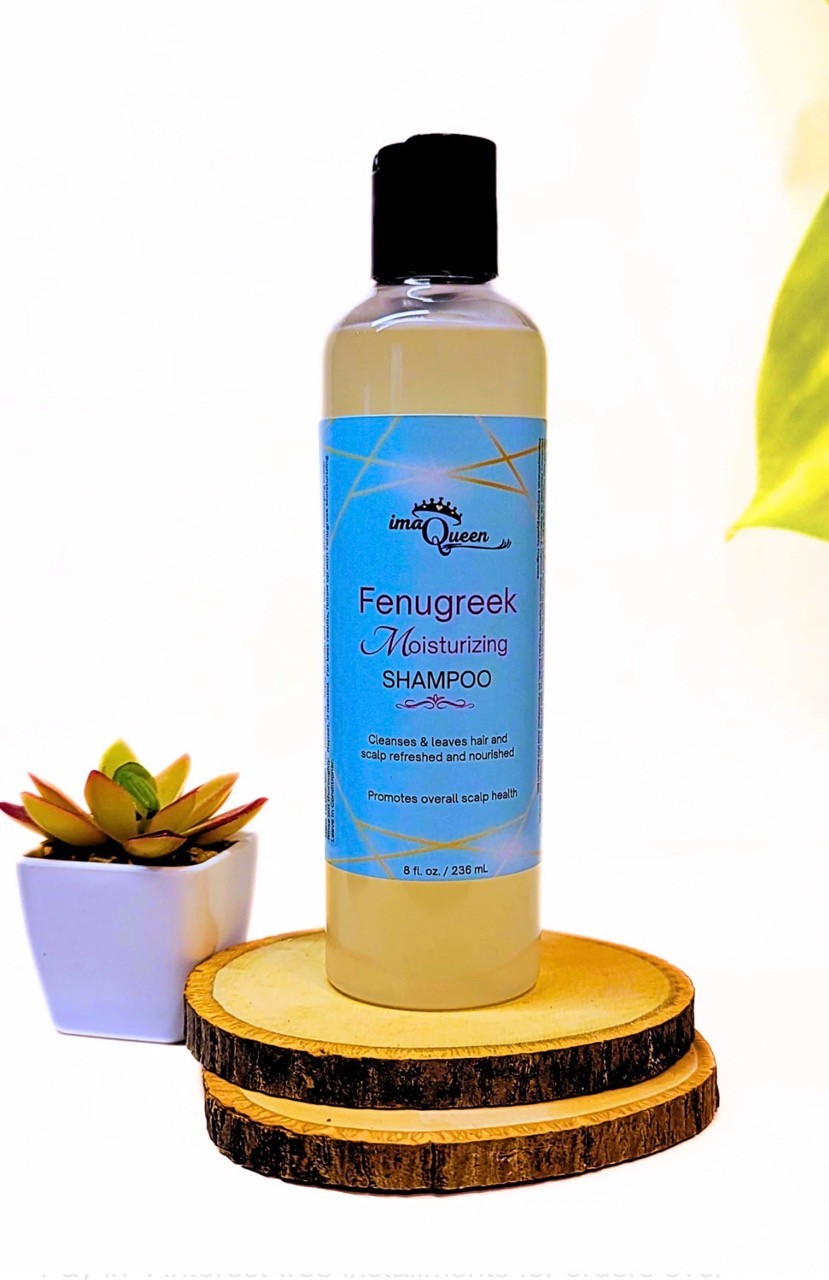
There's a combination of very moisturizing oils in the ingredient list. I don't have Fenugreek oil, so I used other oils. The formula I give you here can be adjusted so you can use the oils you already have.
If you look at the ingredient list, Fenugreek oil or infusion will be somewhere in the middle of the list, which means the amount of this ingredient is low. If you have fenugreek-infused oil, use it to replace one of the oils listed in this formula. Other oils that can be beneficial for dry hair are argan oil, coconut oil, jojoba oil, olive oil, castor oil, broccoli seed oil and sunflower oil.
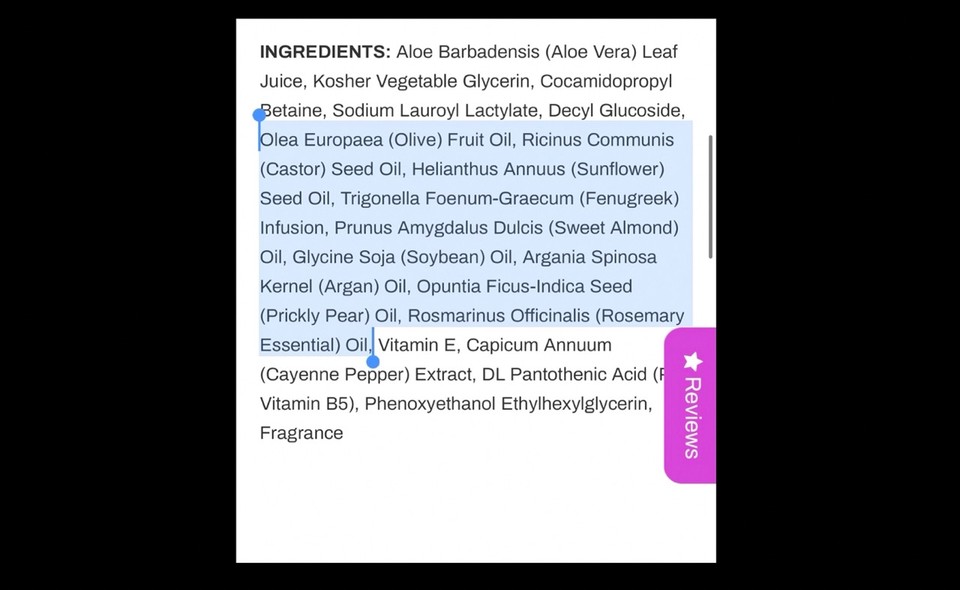
I combined olive oil infused with rosemary (you can check this post on infusing oils with the cold method), castor oil, sunflower oil infused with nettle and argan oil. You can combine other oils you want or other infused oils you have.
If you want a thicker and moisturizing shampoo, you can replace the sunflower oil with Shea butter. If you use infused shea butter with horsetail, you can increase the benefits of the shampoo; you have the information for the horsetail butter here.
You can use the same method of infusing the butter and use nettle leaves or Brahmi powder (INCI - Bacopa Monnieri Leaf Powder) to infuse the shea butter and add more benefits to the final product.
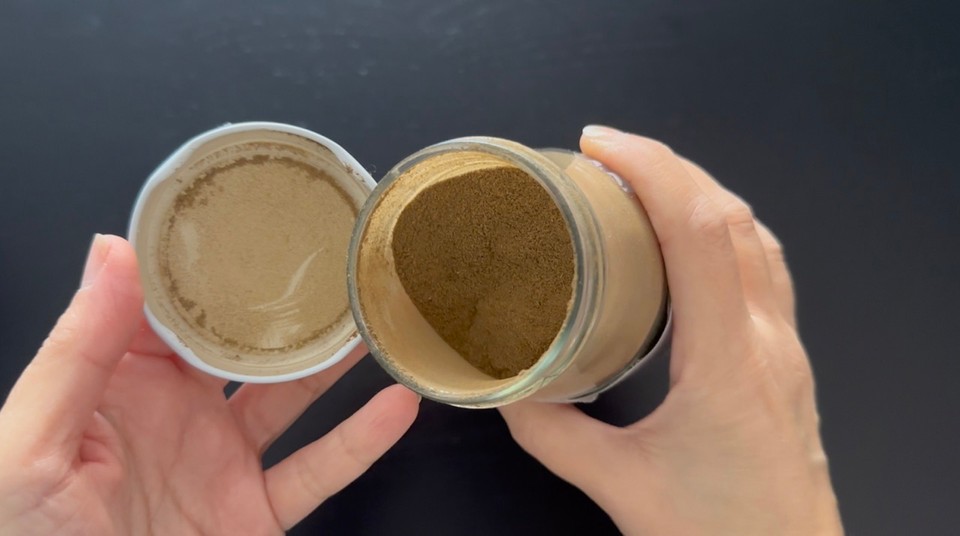
Brahmi powder, packed with essential hair nutrients, is crucial in nourishing hair follicles and reinforcing hair strength from the roots. Brahmi powder is particularly beneficial for dry hair, as it helps to minimize breakage. Brahmi's cooling effects are great for calming a dry and irritated scalp. Its antifungal and antimicrobial qualities also assist in warding off dandruff, a common issue with dry scalp conditions. With regular application, Brahmi can significantly enhance hair thickness, fortifying the hair shaft to reduce thinning and boost hair volume.
If you have FENUGREEK seeds (Trigonella foenum-graecum), you can infuse one of the oils with it or infuse the shea butter with FENUGREEK seeds. Fenugreek seeds contain compounds that can stimulate hair growth; rich in proteins and nicotinic acid, fenugreek strengthens the hair shaft and has a high mucilage content, which makes it an excellent natural conditioner.
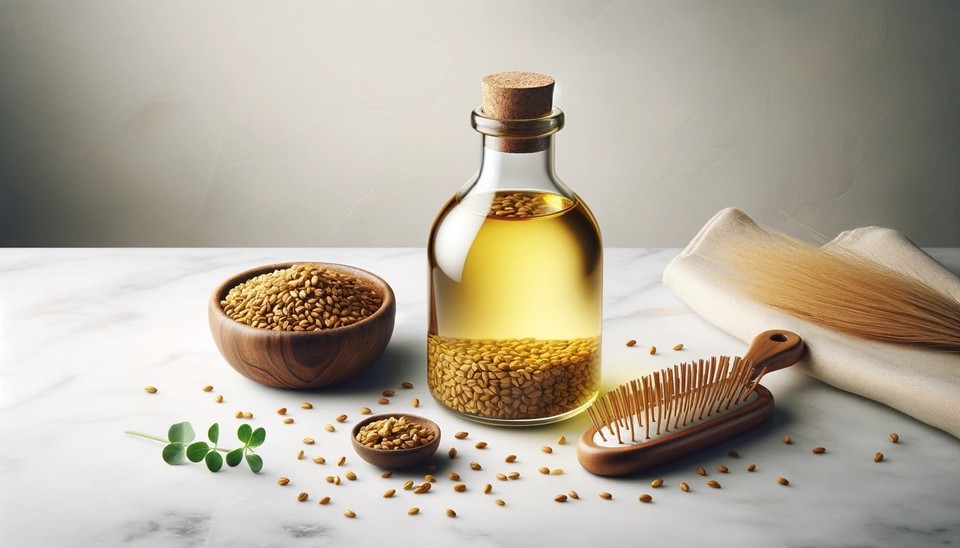
You can use Amla oil, similar to the one I used in the Amla solid shampoo. You can infuse an oil with Amla powder and use it to replace one of the oils in this formula.
As you can see, by infusing the oils, you can add extra benefits to the shampoo, and you can play with the combination of oils you chose for this formula.
To emulsify the oils with the water-based ingredients, I used lecithin.
Lecithin is a natural emollient which helps retain moisture in the hair. By forming a barrier on the hair shaft, it locks in moisture, helping to combat dryness and brittleness. Rich in essential fatty acids, lecithin can penetrate the hair shaft, nourishing and strengthening the hair from within. This helps to improve hair texture and reduce breakage, common in dry hair.
Lecithin also benefits the scalp by providing essential fatty acids and hydration. Lecithin forms a protective layer around the hair follicle, which can help protect hair from damage caused by environmental factors like sun exposure, pollution, and styling tools. For my surfactants, I used Decyl glucoside, coco betaine, and SCI (INCI - Sodium Cocoyl Isethionate).
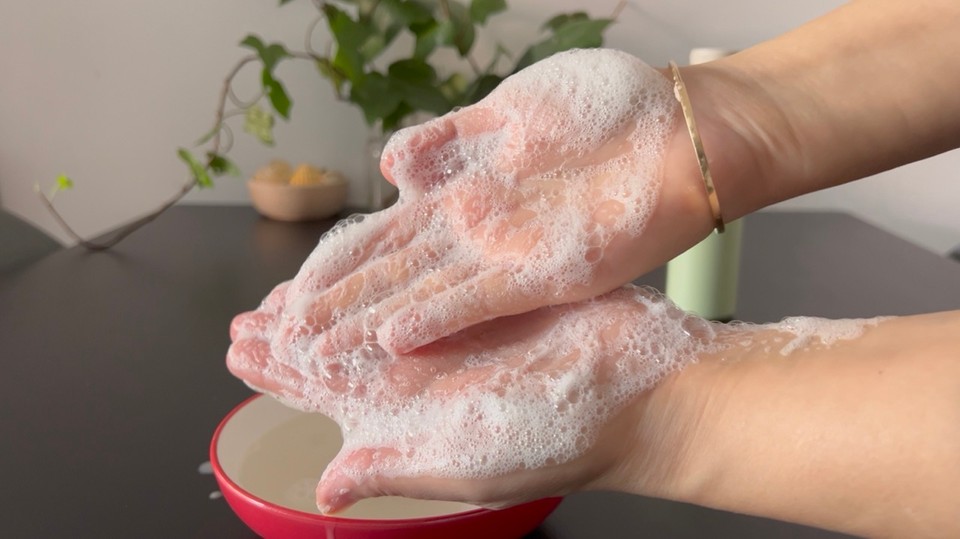
All three surfactants are mild and gentle but have very high cleansing abilities. Combining these three surfactants gives a nice lather to the final shampoo.
Another ingredient that is present in this type of shampoo is DL panthenol, also known as vitamin B5.
Panthenol is great at holding moisture in the hair, which is very important for dry hair. It keeps the hair well-hydrated, helping to make it less dry and less likely to break. Panthenol goes deep into the hair and adds moisture to its core, making it more flexible and less prone to breaking. It also has soothing properties that can calm down dry and itchy scalps. Panthenol strengthens the hair from the inside out, helping to protect it from damage. It works as a conditioner agent, making the hair feel smoother and nicer. Plus, Panthenol is gentle and works well for all kinds of hair, even if you have a sensitive scalp.
Panthenol is usually used at 0.5% to 5%; in this formula, I chose to use it at 2.5%, which is much higher than store-bought shampoos (If I have to guess, store-bought shampoos will only have 1% of Panthenol).

I also added Inulin. Inulin is a natural moisturizer for hair. It draws and keeps moisture in the hair, making it softer and smoother. This ingredient has prebiotic qualities, which help keep the scalp healthy by supporting good microorganisms. Inulin also aids in untangling hair. It smooths the outer layer of the hair, making it easier to comb and style, reducing the chance of breaking or damaging the hair, especially when it's wet.
I used 1% of inulin. If you don't have inulin, you can skip it and add the 1% to the glycerin.
For extra humectant, I added sodium lactate. If you don't have sodium lactate, you can skip it and the amount to the distilled water or replace it with aloe vera liquid.
I divided the distilled water amount into phases A and D because I needed to dissolve the inulin and panthenol powders before adding them to the mixture. You can replace the distilled water in phase D with aloe vera liquid.
Use the calculator to adjust the amount you wish to make.
Method:
- In a heat resistance beaker, add phase A ingredients. Start by making a slurry mixing the gum with the glycerin and then add the distilled water,and cover with aluminum foil to minimize evaporation. (When working with bigger batches, scale your water phase before heating it and removing it from the heat. Calculate the water evaporated during the heating and add the missing amount to the water phase beaker).
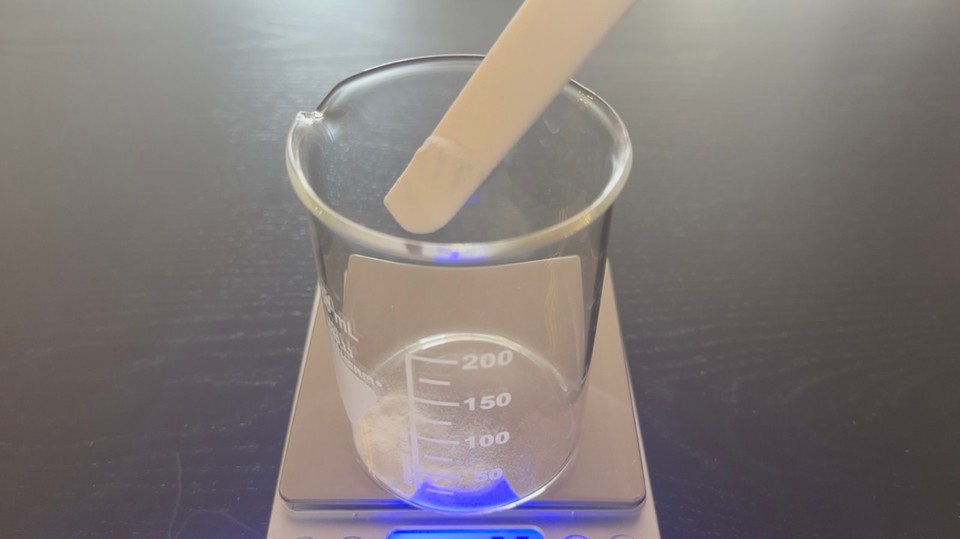

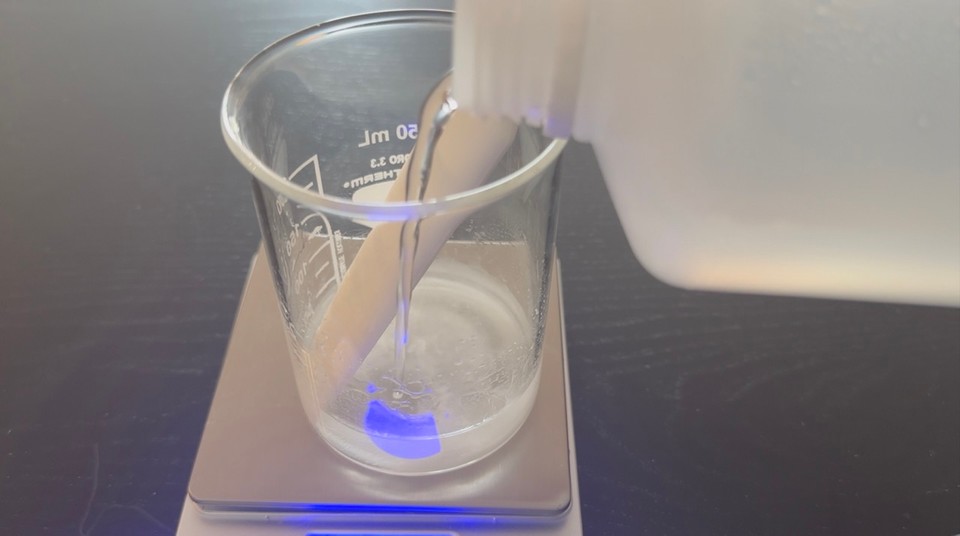

- In another heat resistance, add phase B ingredients.
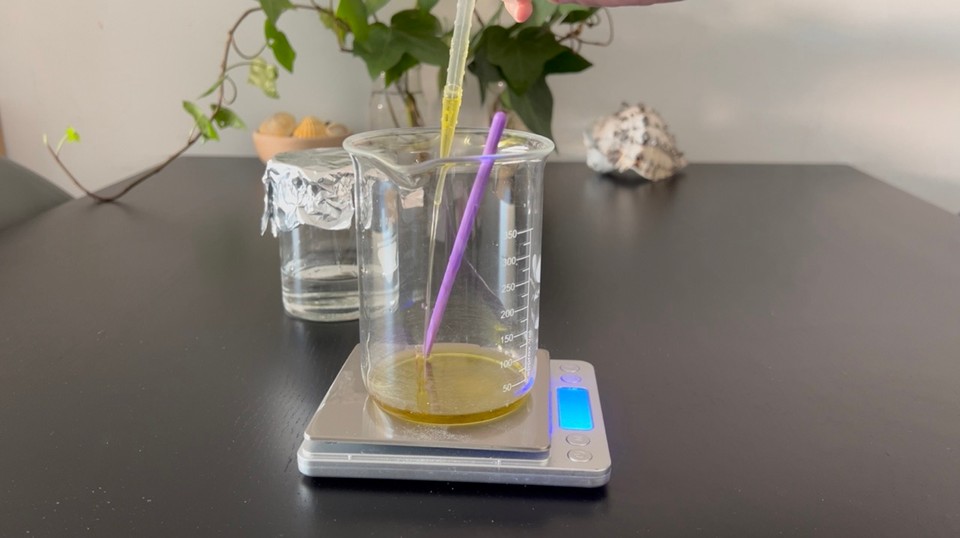
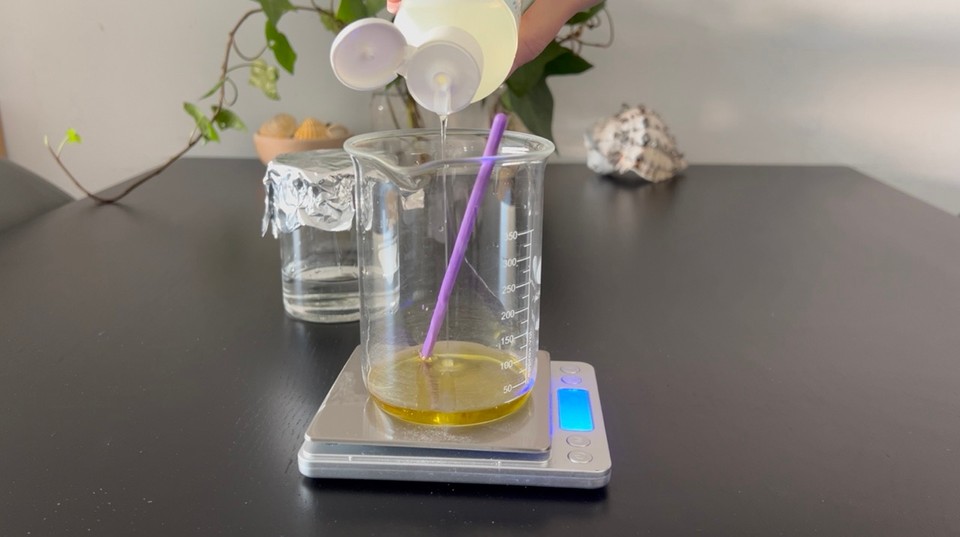
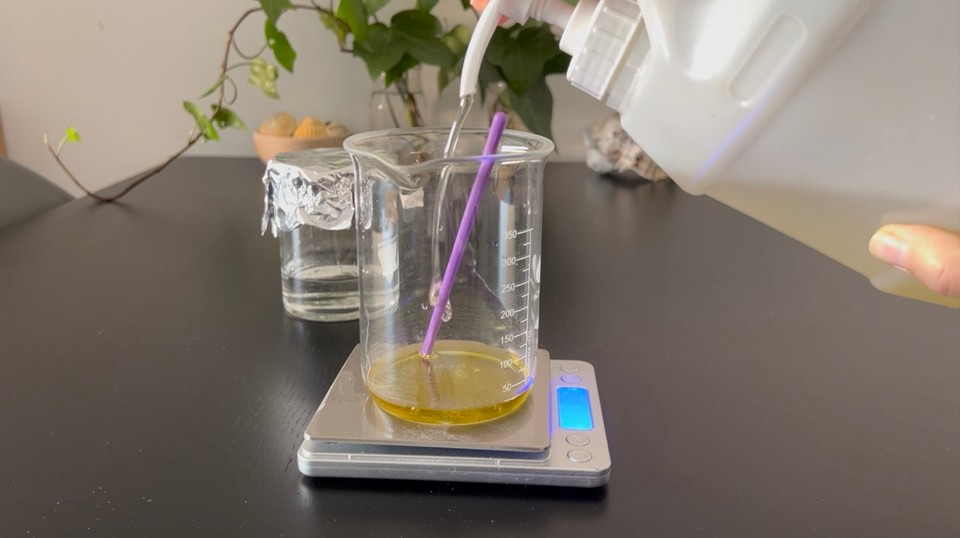

- Place phases A, B into a double boiler on medium heat for 15 minutes.
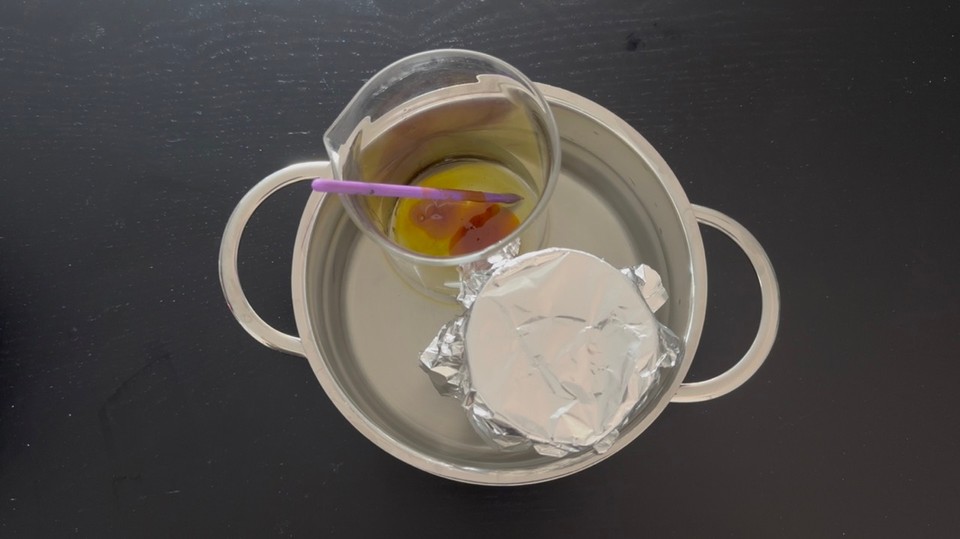
- While phases A, B are heating, prepare phase C and D in different containers and set aside.
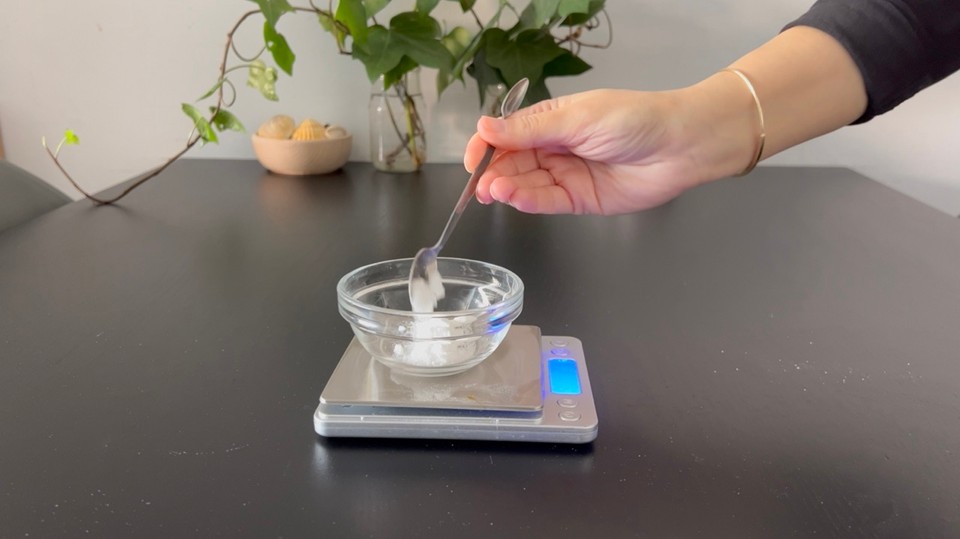
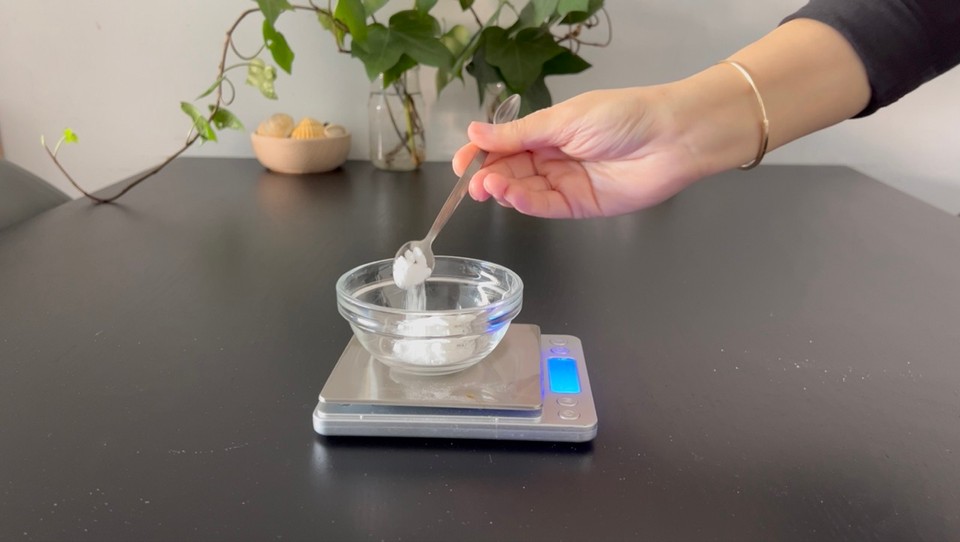
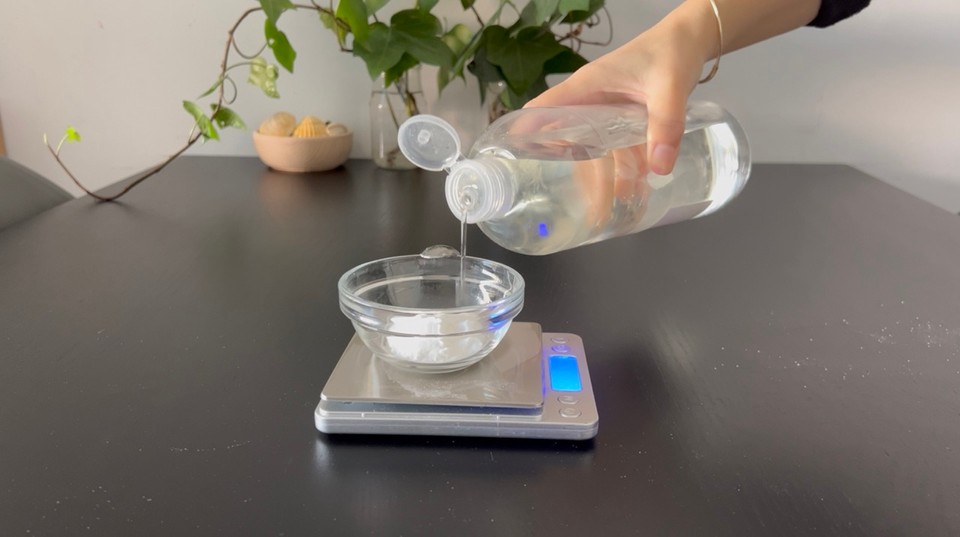
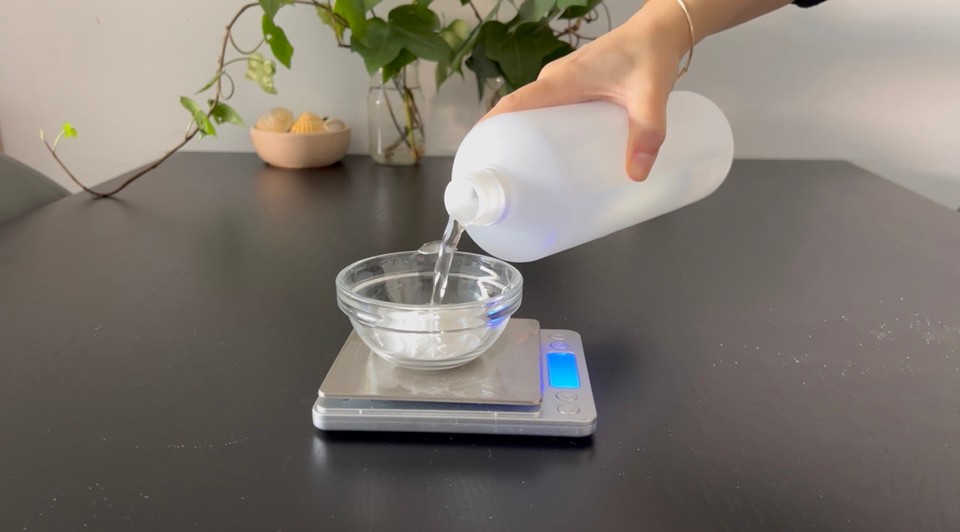
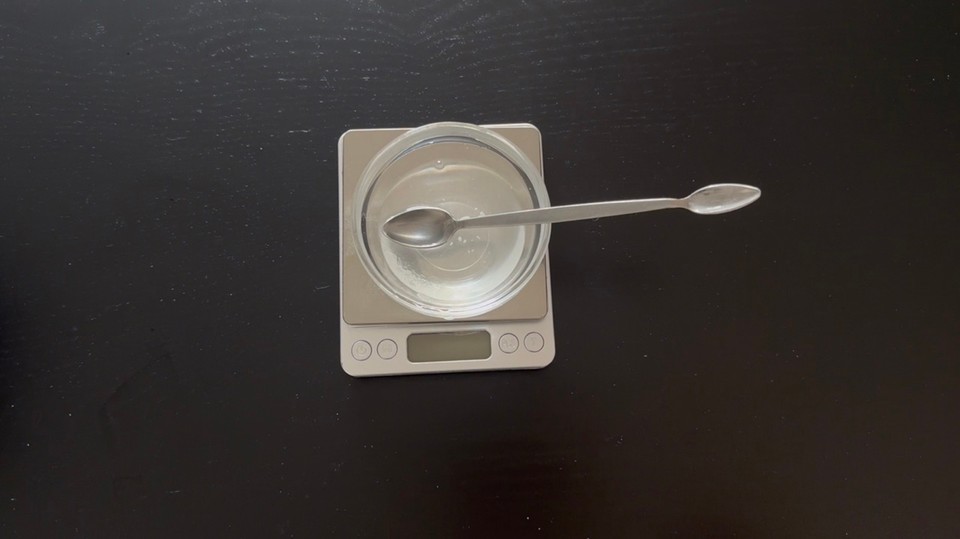

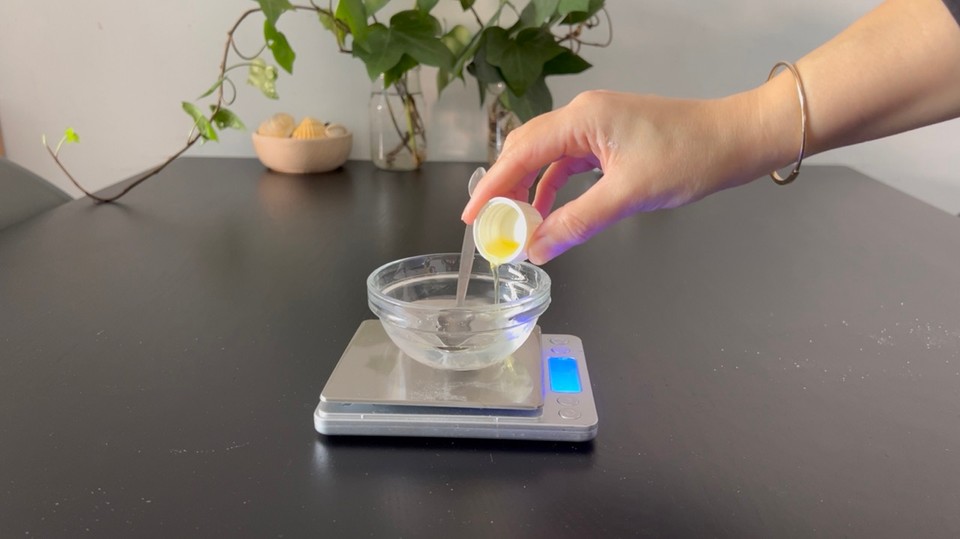

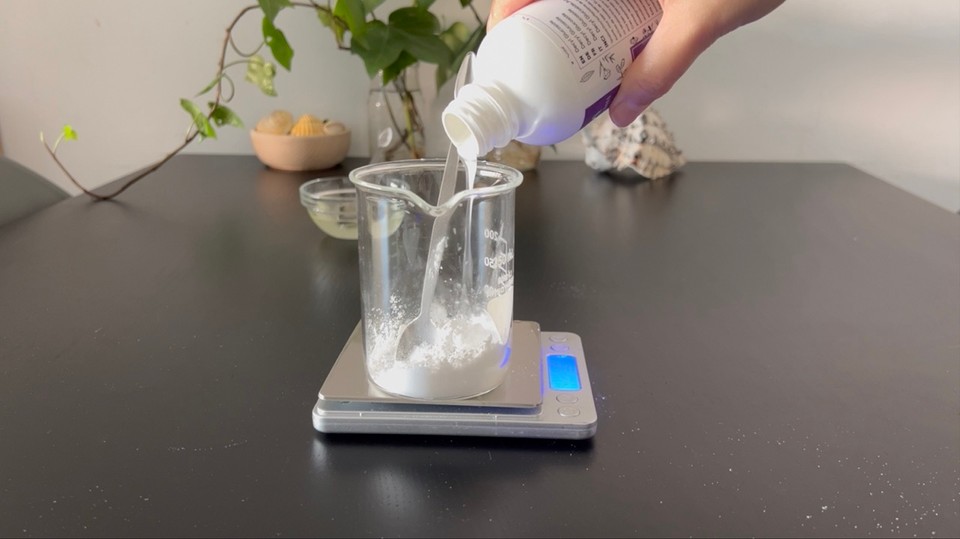

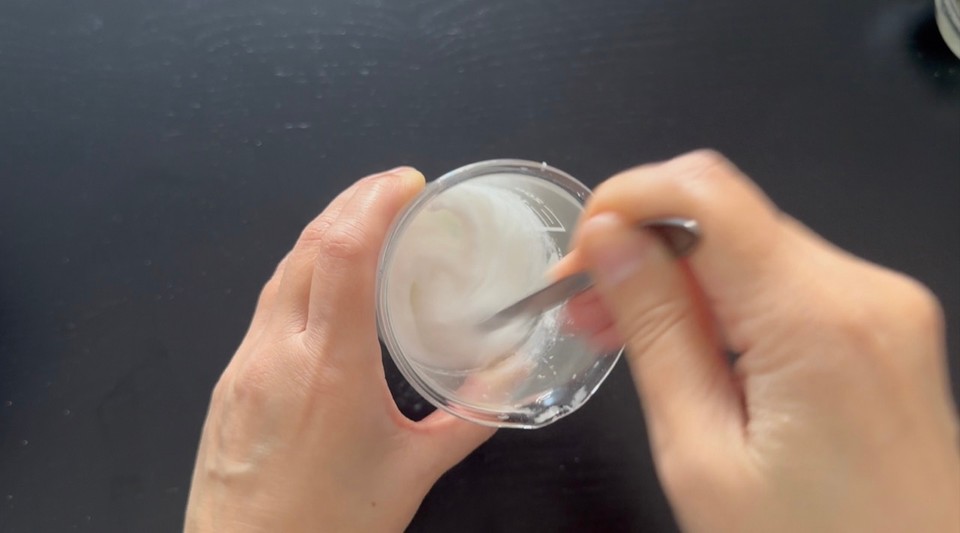

- Remove phases A, B from the heat.

- Combine phases A and B using an immersion blender to emulsify.
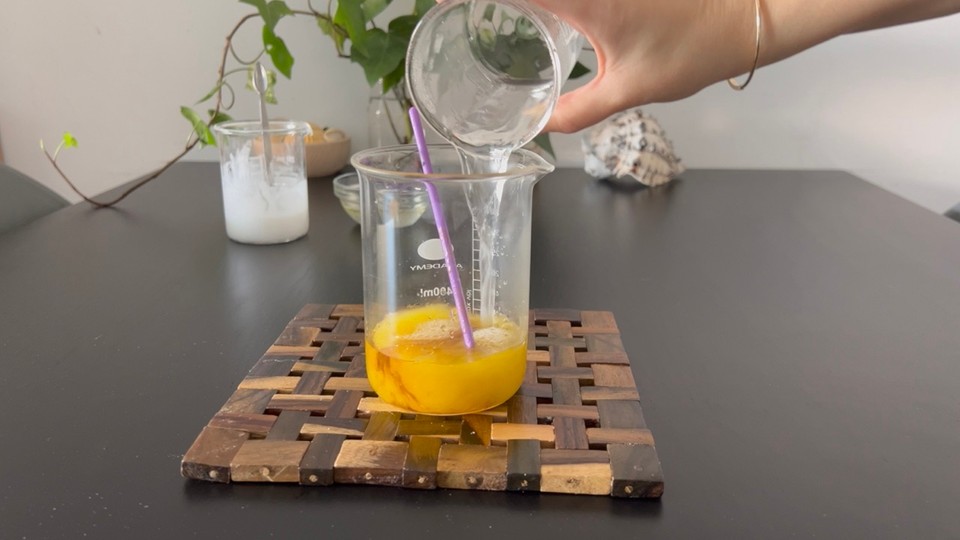
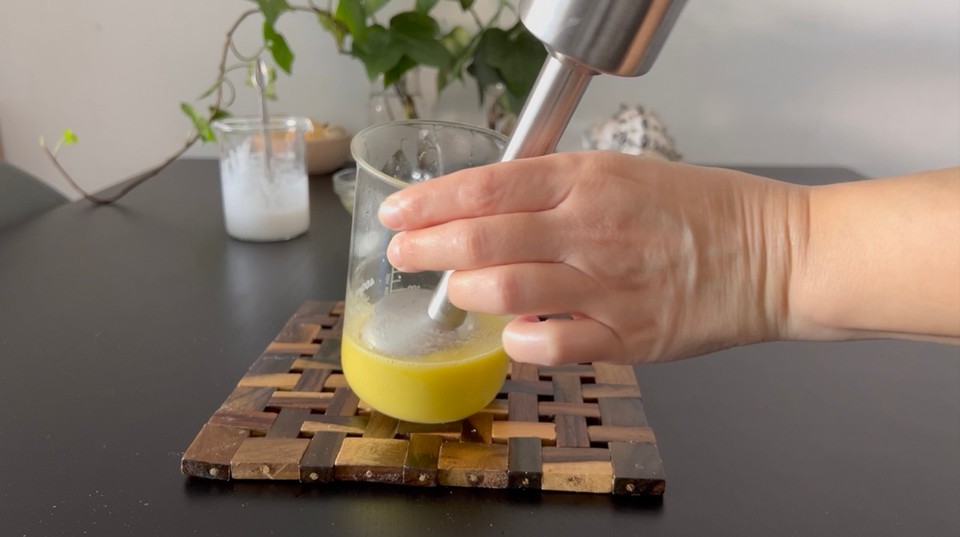
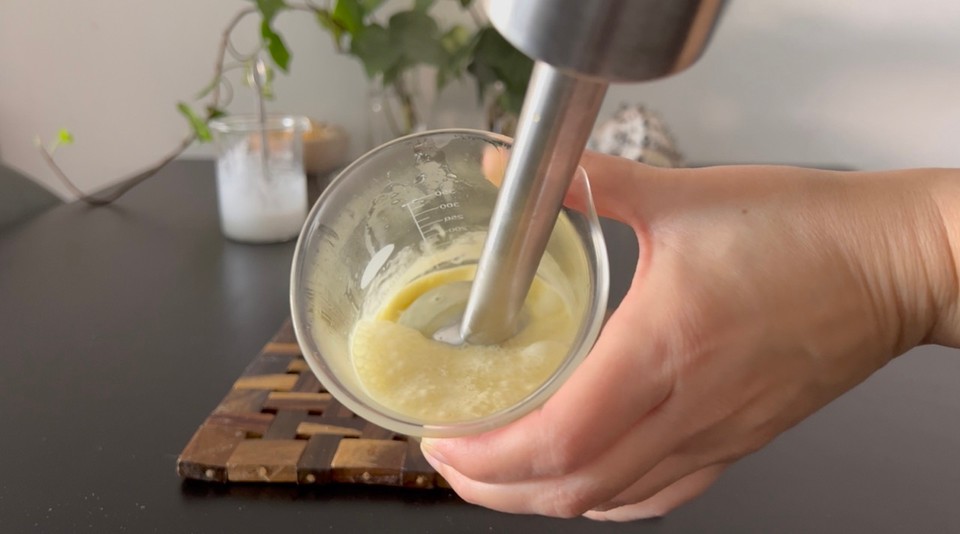
- Add phase C and mix to combine. Mixing phase C will create foaming, the foaming will settle down once the mixture will rest for a few hours (or overnight).
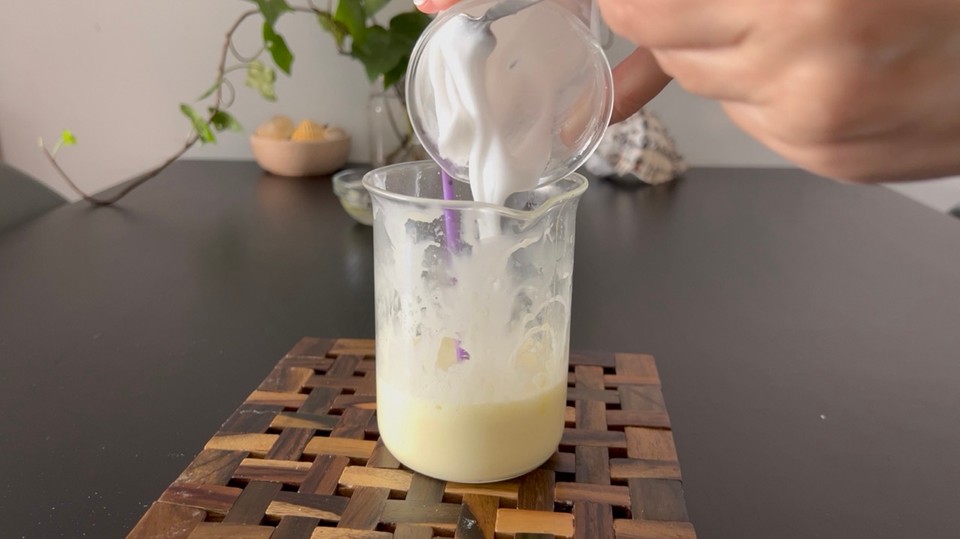
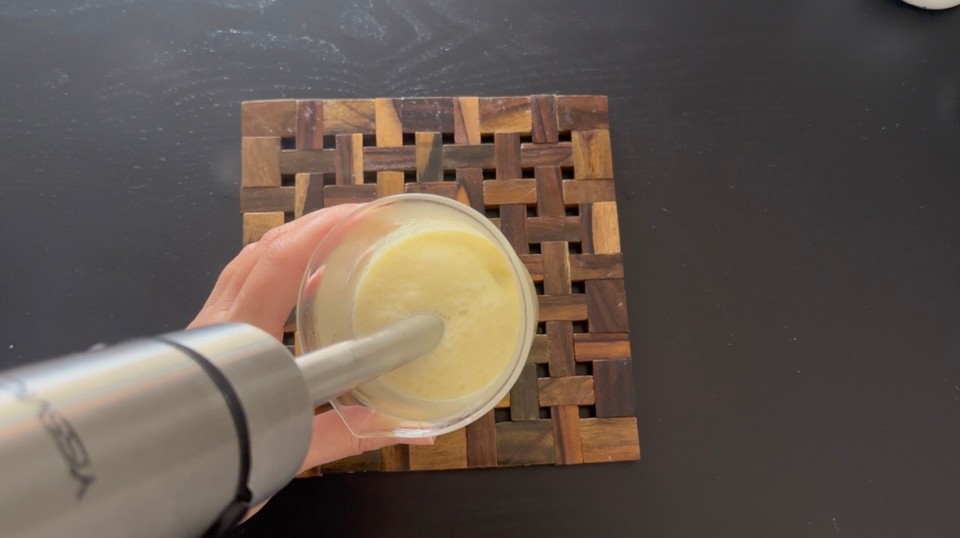
- Add phase D when the temperature is less than 40 degrees Celsius. Mix to combine.
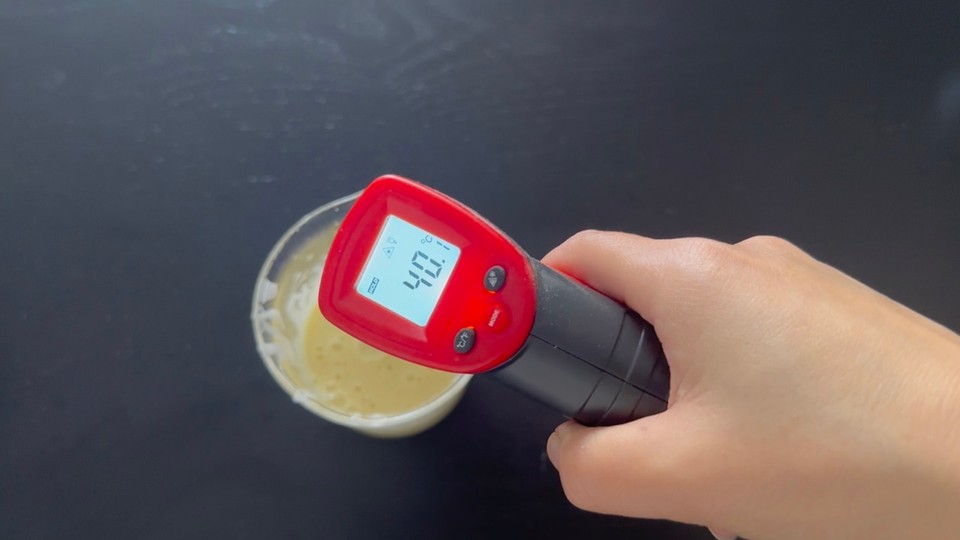

- check the pH level and adjust it if necessary. Read more about pH adjustments here. The final pH should be 5-5.5.
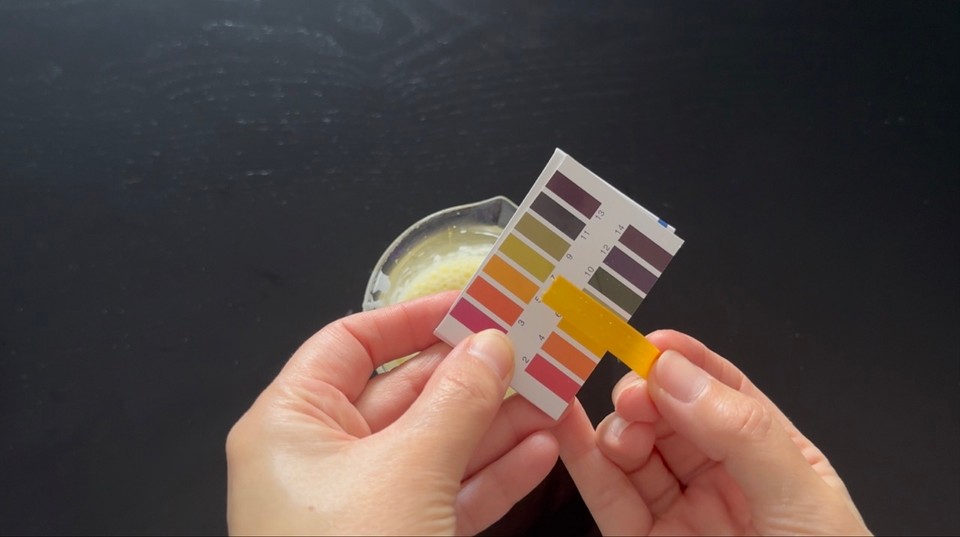
- Let the shampoo rest in the beaker for a couple of hours or overnight.
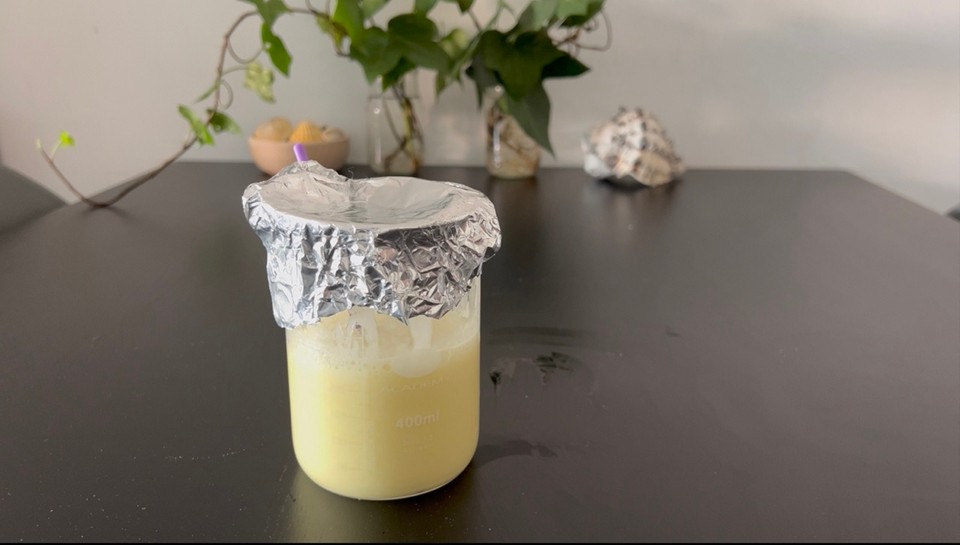
- Pour into a container of choice, a pump or a press bottle.


